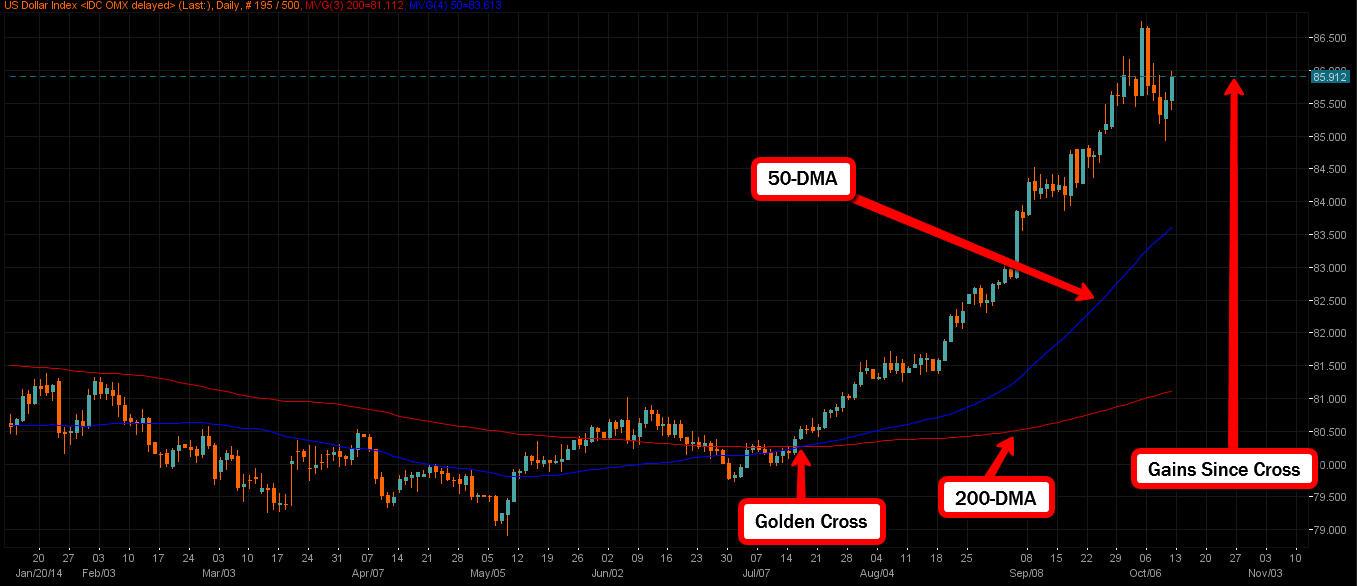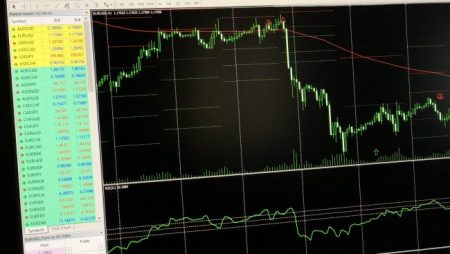Swing Trading Strategy: The Golden Cross and Death Cross

by- Shaun Overton
Swing trading broadly refers to a segment of trading strategies that combine technical momentum and pattern recognition with a smaller emphasis on fundamental analysis. On the whole, swing trading is a great strategy for individuals unwilling to the devote the time and energy necessary for successful day-trading while seeking to be more active in managing funds than simply participating in buy-and-hold strategies. This strategy is largely employed by speculators and retail investors seeking to benefit from the confluence of short-term price momentum and economic fundamentals. This requires a modicum of flexibility unavailable to large institutional investors that are bound by large trade sizes and are often less adaptable to evolving short-term conditions. The time horizon for swing trades is typically a day to several weeks depending on the investor’s strategy and risk tolerance.
Two very famous technical patterns that fall under the category of swing trading strategies include the “golden cross” and “death cross”. Each of these strategies depend on the trends of moving averages, specifically the 50-day and 200-day moving averages (taken from closing prices). These technical patterns rely on more medium-term charts, primarily 4-hour to 1-day charts. Periodicity is especially important as shorter-term charts are not relevant and useful in assessing these patterns.
Golden Cross
The golden cross is a technical pattern where the shorter-term 50-day moving average crosses a longer-term 200-day moving average to the upside. This is a bullish pattern, signifying a situation where upside momentum is forecast to increase, marked in conjunction with higher than average volumes. The 200 day moving average also becomes a support level for prices. This pattern is currently evident in the U.S. dollar index (DXY) which has witnessed a meteoric rise of 6.87% since the 50-DMA crossed the 200-DMA to the upside on July 16th.
Death Cross
The death cross, although dark in name, is merely the opposite of a golden cross, with the shorter-term moving average crossing the longer-term moving average to the downside. This is typically indicative of a possible bear-market on the horizon and is usually confirmed by higher than average trading volumes. After crossing, the longer-term moving average serves as a resistance level for prices and is a great area to short the instrument on momentum pullbacks. A great present-day example of the death cross is in the West Texas Intermediate crude oil benchmark which saw the 50-dma cross the 200-dma on July 22nd, causing losses to-date of -17.12%.

Suggestions for Swing Trading the Golden Cross and Death Cross
Speed is Key
The earlier the entry to a momentum trade the better the risk-reward conditions. As the phrase goes, the early bird catches the word. Quick entry also means more security in exiting a position without worrying about momentum chasing from picking a bad entry point.
Choose Liquidity
A careful exit and entry strategy is essential for any successful trade, especially in the shorter-term time horizons. Instruments that don’t trend for long periods of time and lack liquidity for entering/exiting position are not useful in this particular strategy no matter how pretty the setup. In thinly traded stocks, traders might encounter a sharp price impact from entering/exiting which is likely to create problems for strategies that require nimble maneuvering.
What Not to Do
Avoid fundamental analysis. Although swing trading typically relies heavily on careful reading of the technical indicators, fundamental analysis can still have a dramatic impact on an instrument’s price. Keeping up to date with the news, having familiarity with economics if trading currencies, or earnings if trading stocks is indispensable when swing trading and cannot be ignored. Remember, information is power.
Fight the trend
While not necessarily a trend following strategy, swing trading requires careful examination of the prevailing trend for benchmarks to which an instrument may be closely correlated. For instance, if finding a golden cross in a stock that is a component of a broader index that is trending lower, the relationships between stocks may negate the pattern. Situational awareness is key.
Chase momentum
If late to a trade, wait for a pullback or retrace before entering. Buying highs and selling lows is every investor’s worst nightmare. Timing is everything, so be wary of eagerness to enter a trade.

